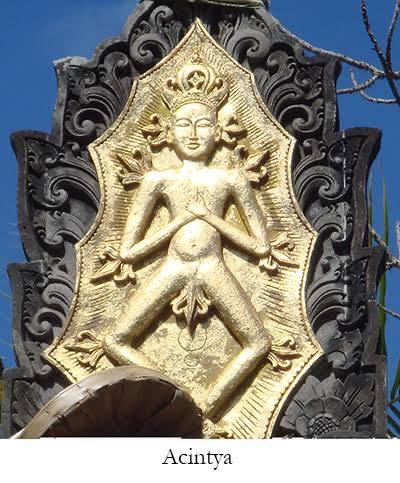August, 2021 This is the anthropology section of the Indonesian Travelogue — Part One: The Indonesian Supernatural World (before Hinduism or Islam.) Buckle up: We are goin’ for a ride; and traveling through the mist of time:
Indonesian tribes had their own supernatural beliefs prior to the introduction of Hinduism or Islam. For example, the aboriginal people in Java and Bali believed in Hyangs, unseen spiritual entities, with supernatural powers. Many of these beliefs were incorporated into Bali Hinduism. Generally, he Hyang spirit can be either divine or ancestral. The Hyangs have many forms and functions. The picture below is the most important Bali Hyang spirit. In Bali Hinduism, the Hyang in the form of Acintya is the Supreme God (equal to Brahma in traditional Hinduism). The following is taken from Wikipedia:
“Acintya (from Sanskrit: ‘the inconceivable’, ‘the unimaginable’), is also known as Sang Hyang Widhi Wasa (‘The Divine Order’). Acintya is the Supreme God of Indonesian Hinduism. Acintya is equivalent to the metaphysical concept of Brahman of Indian Hinduism, and is the Supreme God in traditional wayang (shadow puppet) theatre. All gods, goddesses and existence are believed to be the manifestation of the Acintya in Balinese Hinduism. Acintya is emptiness, and the Universe emanates from Acintya….”
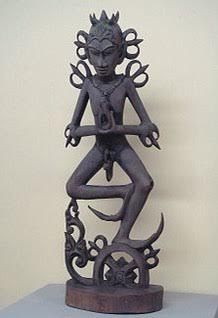
Depictions of Acintya are in every Temple often in gold as in opening photo
In contrast, Java is overwhelmingly Muslim, unlike Hindu Bali. Here is a Hyang in classic Javanese puppet-show representation:
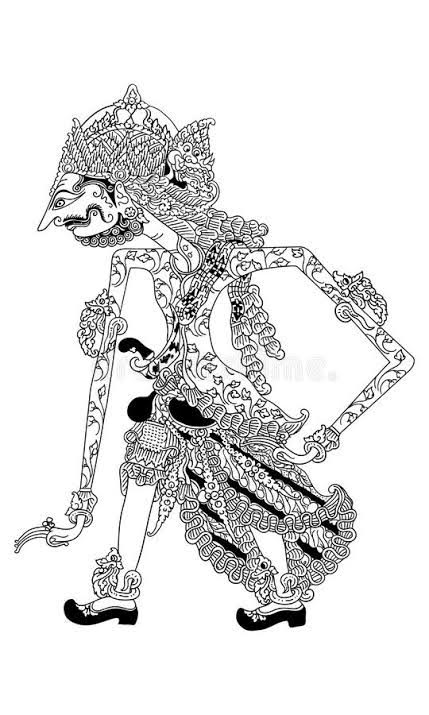
Ancient beliefs in such things as Hyang are not traditions fully incorporated into mainstream Bali Hinduism. The ancient Hyang reverence exists today in traditions alongside Balinese Hinduism. See below about the Sanghyang dance ritual. In fact, the Hyang is central to Balinese Hinduism. Yet, Hyang spirit worship is not limited to Bali. The Hyang can be found in several other local cultures, including the Sunda Wititan and Kejawen tribes.
For example, in Western Java there still exists the aboriginal Sunda Wititan religion. Wititan existed locally before the introduction of Hinduism in the first century A.D. and is the aboriginal traditional religion of Indonesia. Various shades of Wititan are still practiced in different locales (often rural areas). However, much of Wititan has been adapted in what is called “Hinduized”. The Sunda Wiwitan practitioners remains most faithful to the pre-Hindu ancient beliefs. Generally, the Wititan tradition holds that the ultimate force is the local form of Hyang, known as Sang Hyang Kersa (the “Most Powerful”).
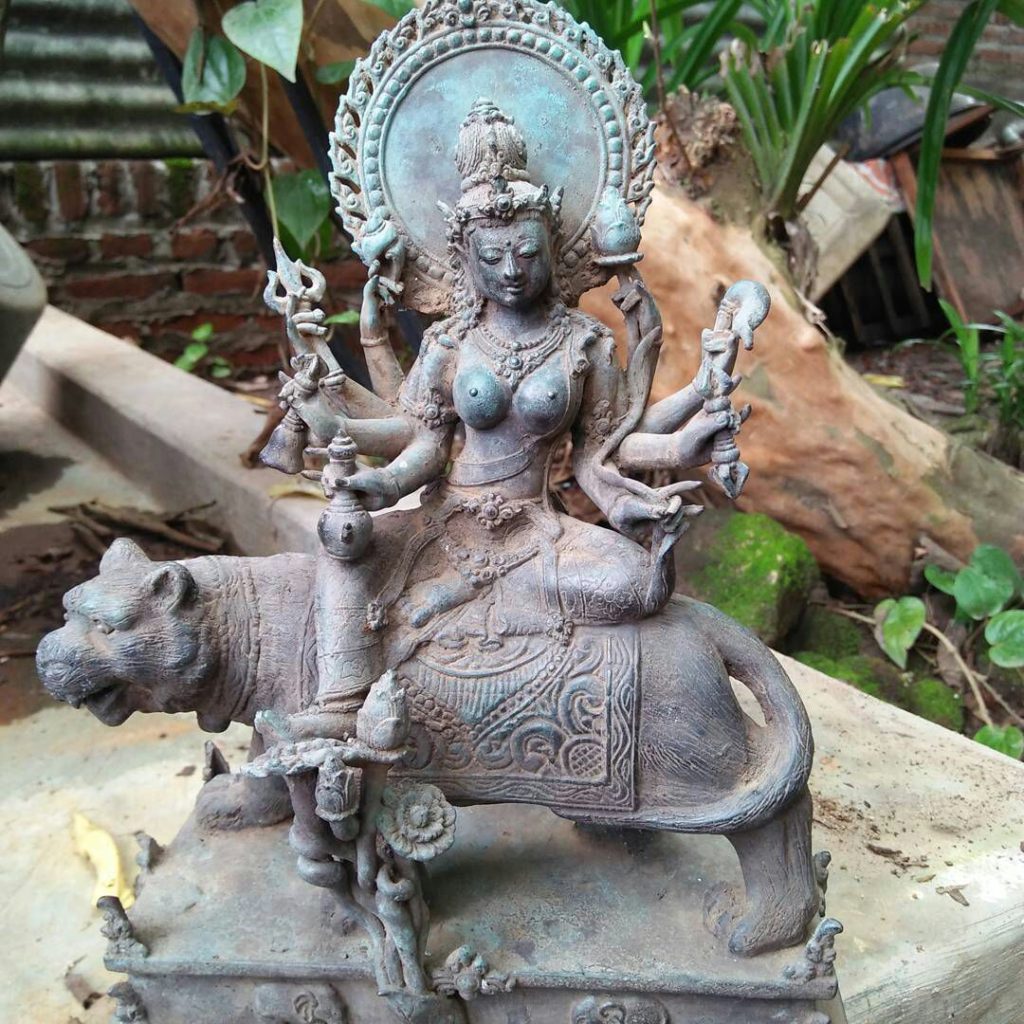
Sang Hyang Kersa lives in the uppermost portion of the world, known as the “Pointy Realm” (also called the Peak Realm),. Humans, in contrast, live in the Middle Realm. Between the Pointy realm of Sang Hyang Kersa and the MIddle Realm of earth, there exists eighteen (18) additional layers or realms, arranged in decreasing order of sacredness from top to bottom. Naturally, there is also a lower realm, also known as hell, filled with demons and fire. The lower realm is called Buana Larang.
The Lower Realm or Buana Larang — but where are the Demons?

Note: The study of traditional Indonesian culture is not for the faint of heart.
While other parts of Indonesia have similar, traditional religious beliefs, the supernatural tradition seems strongest in Bali, from my limited knowledge. Here below is a Balinese ritual dance or trance of the Hyang spirit that continues to the current day, in Balinese Hindu temples:
[Taken from Wikipedia, “Sanghyang”] From: https://en.m.wikipedia.org/wiki/Sanghyang
Sanghyang is a sacred Balinese dance based on the premise that an unseen force enters the body of an entranced performer. The force, identified as hyang, is an important type of spiritual
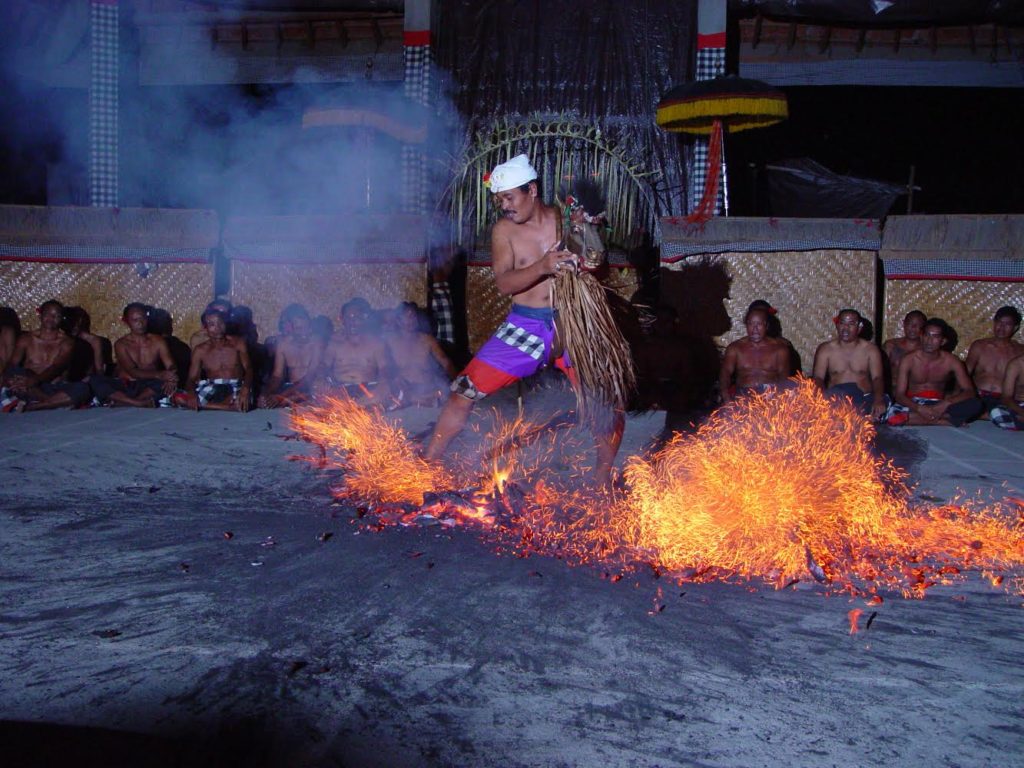
Sanghyang bojogEdit
The dancer is a man dressed like a monkey (bojog) and accompanied by a chorus of chanting sanghyang. Before it begins, the dancer goes through the phases of summoning ape spirits. After conceding, the dancer will jump into a tree and mimic the behavior of an ape. This dance is only found in Bugbug, Karangasem.[2]
Sanghyang celengEdit
This is a sanghyang dance variant only found in Duda, Karangasem, danced by a man wearing palm fiber clothing. The dancer mimics the movements of a pig.[2]

Sanghyang dedariEdit
Sanghyang dedari is a dance performed by pre-pubescent girls, similar in some ways to the legong dance. Often the girls are carried on the shoulders of men; trance is associated with this ritual.[2]
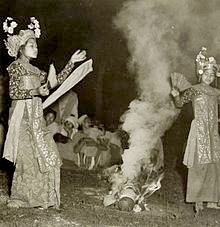
Sanghyang delingEdit
This dance is performed by a pair of pre-pubescent girls who are entered by the spirit of Goddess Sri (Goddess of Fertility). Each dancer holds a tree linked to a thread, where two suspended dolls are made from a lontar leaf called deling.[2]
